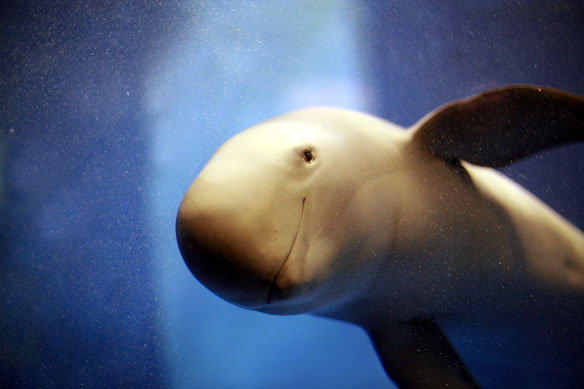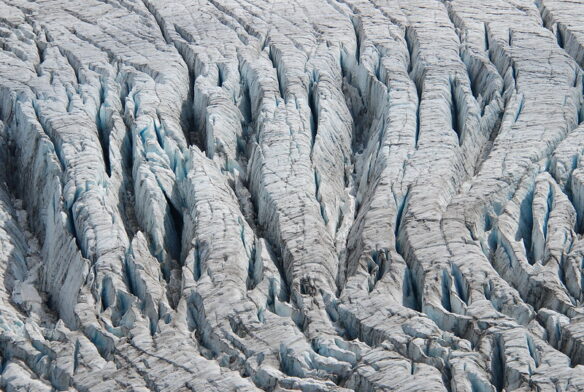
The finless porpoise lives in the coastal waters of Asia, especially around Korea, India, China, Indonesia, Bangladesh and Japan. Throughout their range, the porpoises stay in shallow waters, up to 50 m (160 ft) deep, close to the shore, in waters with soft or sandy seabeds, or in estuaries and mangrove swamps. Captions: Wikipedia. Photo source: ©© Kenichi Nobusue
Excerpts;
The Yangtze finless porpoise, which inhabits the high-traffic waters near the Three Gorges Dam in China, is highly endangered, with only about 1,000 animals alive today. Scientists from Woods Hole Oceanographic Institution (WHOI) and their Chinese colleagues are using medical technology to shed new light on this species’ critical sense of hearing in a waterway punctuated by constant shipping, dredging, and underwater construction.
“We want to understand how they may be impacted by noise,” said Aran Mooney, a biologist at the Woods Hole Oceanographic Institution (WHOI) and a lead author on the study published online this week in the Journal of Experimental Biology.
Marine mammals such as dolphins and porpoises rely on their hearing to navigate, communicate, and find food in the typically deep, dark, and murky waters they inhabit. But what we know about how they hear has been limited to research on just a few species, particularly bottlenose dolphins, because they are relatively common in marine parks and aquaria. This can be a problem when natural resource managers and regulators base aquatic noise pollution policy decisions on data from a limited number of “representative species” when there are over 70 species of toothed whales or odontocetes that live in a variety of aquatic habitats.
This new research shows how variability in the size and shape of toothed whales’ heads across species can result in marked differences in how they receive sound and how sensitive they are to a range of frequencies…
Accoustic Pollution and Marine Mammals, Nature
In the Canary Islands, 14 beaked whales washed ashore bleeding from the ears. All eventually died. A post-mortem examination revealed that the whales showed signs of decompression sickness (what scuba divers call “the bends”). Decompression sickness can occur when a mammal swims to the ocean’s surface too quickly, and the change in pressure produces lethal nitrogen gas bubbles that clog its blood vessels. Evidence of acute decompression sickness indicates unusual behavior. Over the past 40 years, cumulative research across the globe has revealed a coincidence between naval sonar testing events and acute decompression sickness in beached marine mammals…
Whale Mass Stranding Attributed to Sonar Mapping For First Time
Information About Noise, Flows, Hydrogen Sulphide in the Baltic Sea, Science Daily
The first devices for measuring underwater noise have been anchored this week to the bottom of the Baltic Sea on the coast of Finland…








